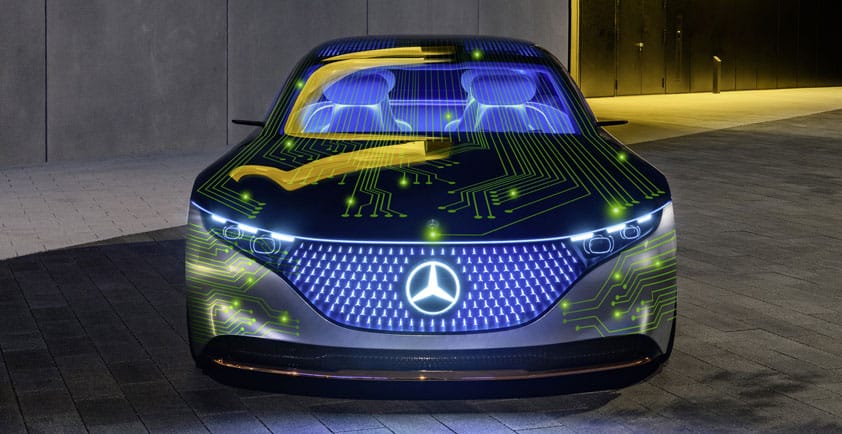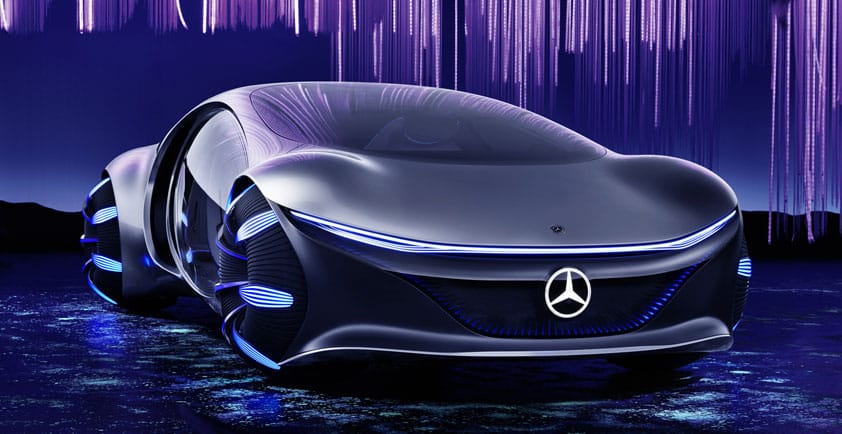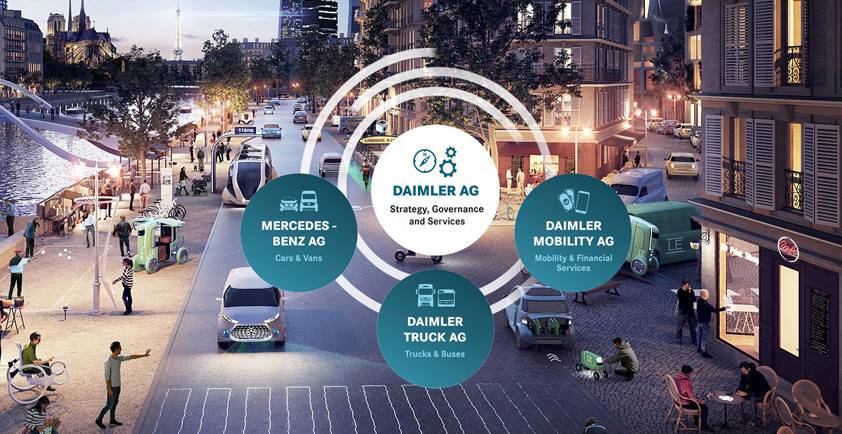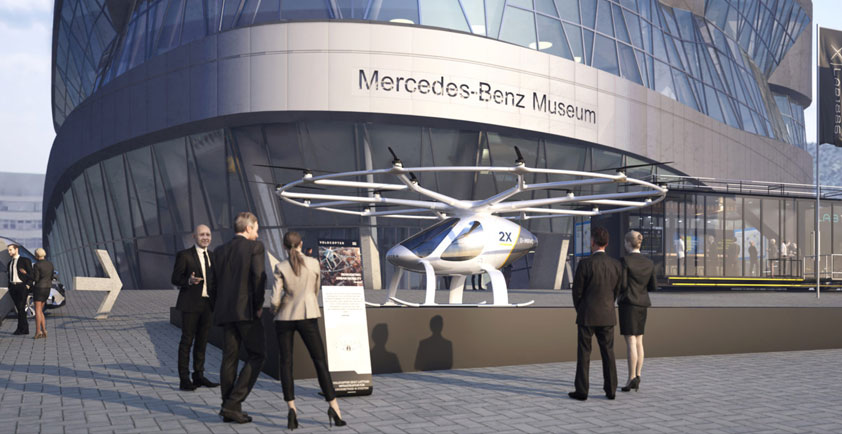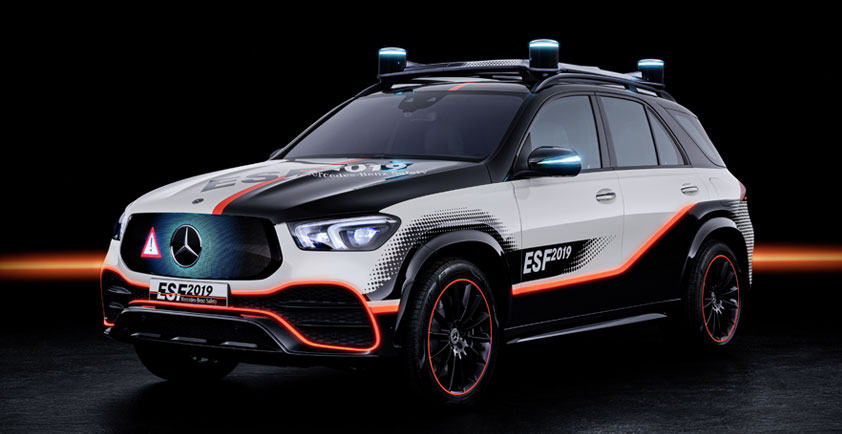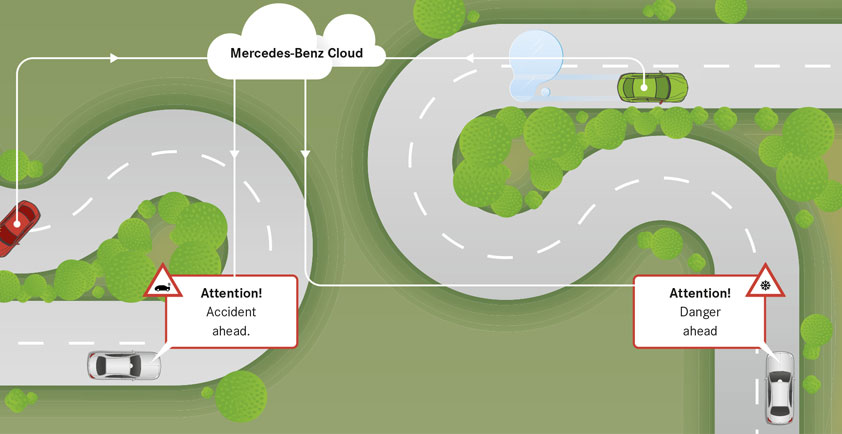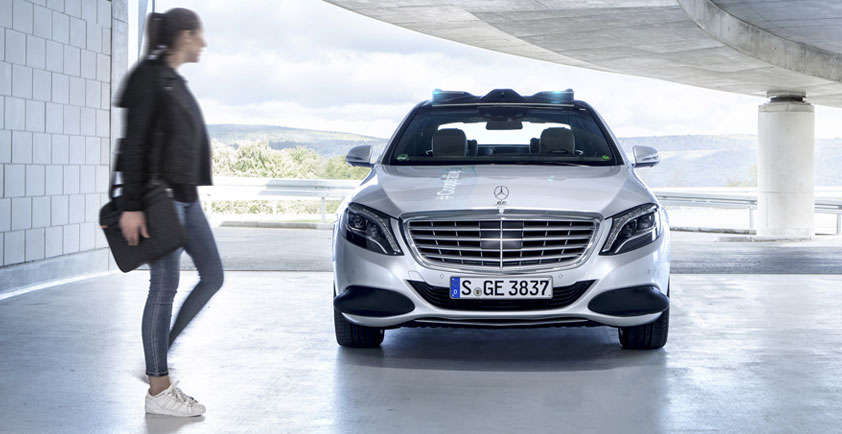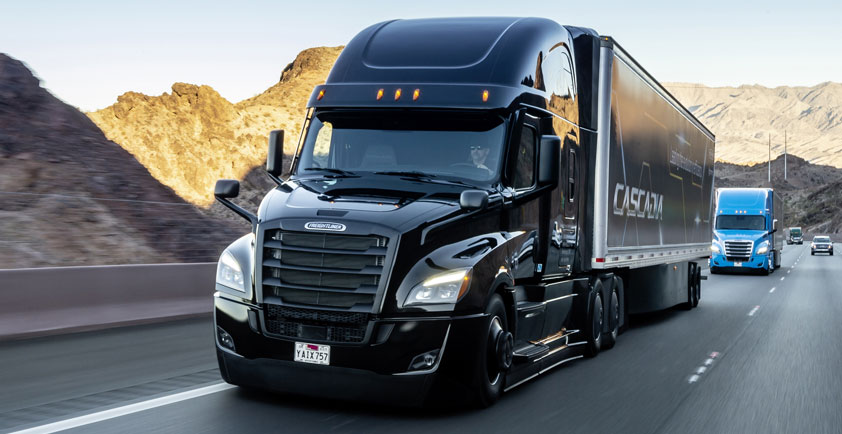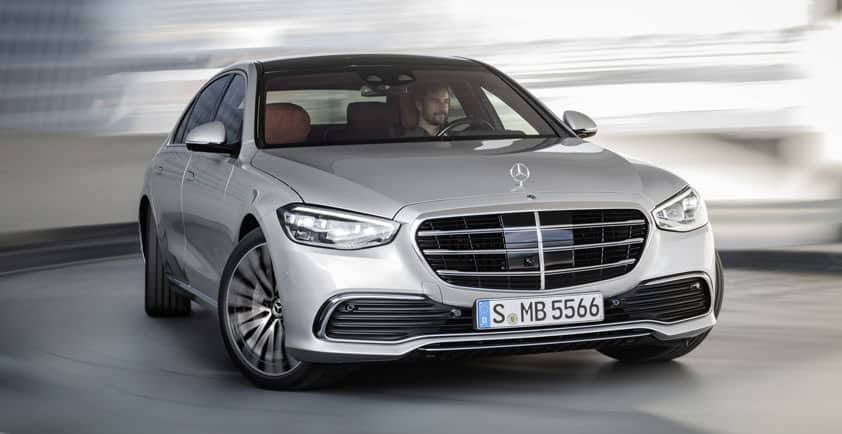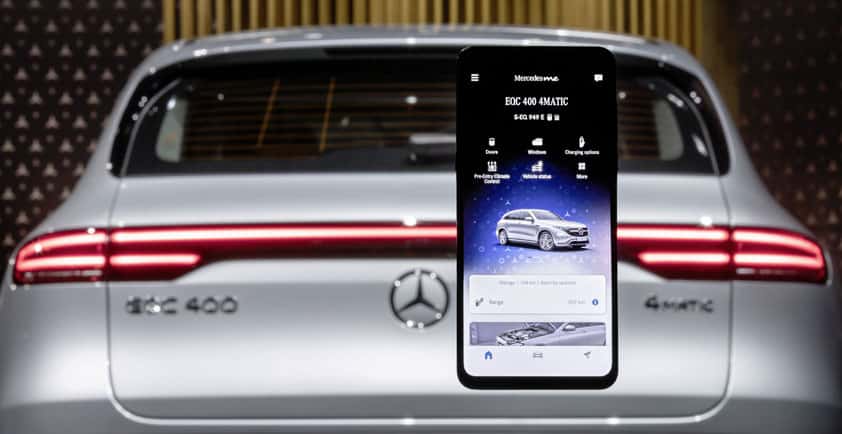
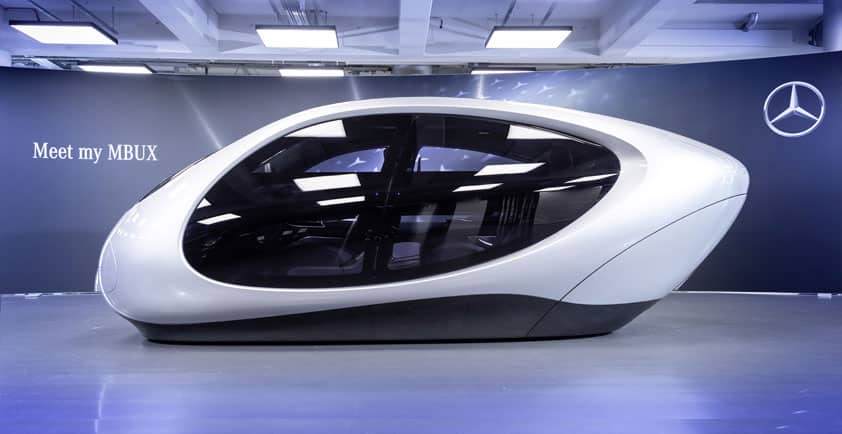
MEET THE S-CLASS DIGITAL: "MY MBUX" (MERCEDES-BENZ USER EXPERIENCE): AT HOME ON THE ROAD – LUXURIOUS AND DIGITAL
Stuttgart. Have a quick look the presentation on the way to the office, and discuss minor changes with your assistant by telephone conference? Or while away the long journey to your holiday home with the latest online films, while your brother next to you listens to his favourite audiobook? Whether managers or children – in an S-Class, and especially in the main markets of China and the USA, the boss often sits in the rear. Accordingly Mercedes-Benz has systematically designed the new edition of its flagship model with the rear in mind. One example: passengers in the rear have the same extensive Infotainment and comfort features as the driver and front passenger. They have access to up to three touchscreens and a variety of different control options such as MBUX Interior Assist or the voice control assistant "Hey Mercedes".
No other innovation in recent years has so radically changed the operation of a Mercedes-Benz as MBUX (Mercedes-Benz User Experience). The second generation of this learn-capable system now has its debut in the new S-Class. The vehicle interior is even more digital and intelligent, as both the hardware and software have made great strides: brilliant displays on up to five large screens, in part with OLED technology, make control of vehicle and comfort functions even easier. The human factor is always the central consideration. The possibilities for personalisation and intuitive operation have become far more extensive. This certainly applies in the rear, but also for the driver: for example, the new 3D driver display allows a spatial view at the touch of a button for the first time. A real three-dimensional effect is achieved without having to wear 3D glasses.
The voice assistant "Hey Mercedes" is capable of even more dialogue. Certain actions can be performed even without the activation keyword "Hey Mercedes", for example. These include accepting a telephone call or displaying the navigation map. "Hey Mercedes" can now also explain where the first-aid kit is located, or how to connect a smartphone via Bluetooth.
Alongside the classic entry of a PIN, a new authentication method ensures a high level of security. Fingerprint, face and voice recognition are combined. This allows access to individual settings or verification of digital payment processes from the vehicle.
However, the unique feature of MBUX is its networking with a wide range of vehicle systems and sensor data. For example, the exit warning function in the S-Class now uses cameras to recognise that an occupant wants to leave the vehicle. If another road user is approaching in the blind spot, the active ambient lighting becomes part of the exit warning system and flashes red. MBUX Interior Assist checks whether the child seat is correctly attached to the front passenger seat. The driver's attention level is also monitored. The driver is warned by ATTENTION ASSIST if there are signs of microsleep.
“Our overarching goal is to offer the utmost in comfort, personalization and convenience for our customers. A system that is more detailed, thoughtful and individual than ever before. So I would even call it My MBUX. Through even more ease-of-use, our customers gain extra time and added value. This goes beyond just displays and voice control. My MBUX now becomes the spinal cord, or even the central brain of the vehicle.”
Sajjad Khan, Member of the Board of Management of Mercedes-Benz AG, CASE
The major innovations in detail
Augmented reality head-up display (AR-HUD): Two different head-up displays (HUDs) are available on request, one of them an innovative variant with a particularly large image. The aperture angle of the display is 10° horizontal and 5° vertical, and the image appears virtually at a distance of 10 metres. This display area corresponds to a monitor with a 77-inch diagonal. The AR-HUD provides a great deal of augmented reality content for driving assistance systems and navigation information. For the driver this blends into the surroundings ahead of the vehicle, and can therefore contribute to further reduced distraction. The image-forming unit (DMD, digital mirror device by Texas Instruments) consists of a high-resolution matrix of 1.3 mill. individual mirrors and a highly efficient light source. The technology is also used by beamers in cinemas. In the S-Class it is used by Mercedes-Benz for the first time to generate images in the head-up display.
3D driver display: An impression of spatial depth is created when the eyes of a viewer perceive different perspective views of an object in the display. In this innovative auto-stereoscopic display, this is achieved by the sophisticated combination of a conventional LCD display with a special pixel structure and a controllable LCD aperture grille. What is known as a barrier mask is positioned a few millimetres in front of the LCD. It is so precisely adjusted to the head position of the viewer that the left and right eye see different pixels of the LCD. This creates the desired impression of depth. A stereo camera system is integrated into the display. This is used to precisely determine the eye position of the viewer. Thanks to methods developed by Mercedes-Benz to adapt distances and a very low-latency system configuration, the driver enjoys a wide range of free movement. The image in the driver display is continuously adjusted.
MBUX Interior Assist: Using cameras in the overhead control panel and learning algorithms, MBUX Interior Assist recognises and anticipates the wishes and intentions of the occupants. It does this by interpreting head direction, hand movements and body language, and responds with corresponding vehicle functions. For example, if the driver looks over his/her shoulder towards the rear window, Interior Assist automatically opens the sunblind. If the driver is looking for something on the front passenger seat in the dark, it automatically switches the light on. Merely looking at one of the outside mirrors is enough to allow adjustment, without having to select it first. Natural hand movements are also recognised, and the driver or passengers can open the sliding sunroof touch-free. Preferred functions can be accessed with the help of the favourites gesture (hand with the index and middle finger spread in a V-shape). The driver and passengers can link personal favourites with the system. As well as enhancing operating convenience, MBUX Interior Assist improves safety. It checks whether a child seat on the front passenger seat is correctly attached, for example.
OLED technology: The abbreviation stands for Organic Light Emitting Diode. In contrast to LCD technology, an OLED display consists of several organic layers applied to a plastic substrate. In the S-Class the OLED display is located behind a glass facing, and in combination with the actuators and pressure sensors behind it, it provides a comprehensive control and display experience. Evaluation of the pressure exerted and haptic confirmation of touch commands makes extended functionalities possible. OLED panels emit light when subjected to an electric current, and unlike an LCD they do not require external background lighting. Power is only consumed where pixels light up. Among other benefits, this ensures a better black level and even stronger contrasts. When showing typical video sequences, OLED technology has an up to 30 percent lower energy consumption than LCD technology.
Voice assistant "Hey Mercedes": Conventional voice control systems in cars call for certain fixed commands from their users. Because it understands natural language, "Hey Mercedes" listens to almost every word and understands practically any sentence relating to infotainment sector and vehicle operation in 27 languages. Indirect speech is also recognised, for instance if the user says "I am cold" instead of the clear command "Temperature in footwell 24 degrees" in order to operate the climate control for the footwell. The voice control is also capable of learning. On the one hand it tunes into the user and their voice and also understands non-native speakers better; on the other hand the software models on the server learn new buzzwords or changing use of language with time. The system also no longer answers stereotypically, but varies in the dialogue output too. The fundamental way the language assistant operates: the voice input is freed from background noises, compressed and transmitted. Both the head unit in the vehicle and the server evaluate the data and send a reply. The system decides which reply is the most likely, then within a few seconds the reply/reaction follows. This means that the voice assistant also answers if there is no connectivity.
